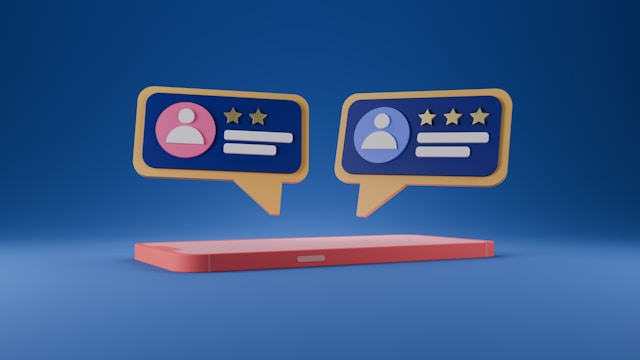Imagine this: You’re scrolling through Instagram, and you see a slick ad for a new skincare brand. The lighting is perfect, the model’s skin looks unreal, and the caption is just persuasive enough to make you pause. But do you trust it?
Now, picture this instead: Your best friend—or even just a regular person you follow—posts a video raving about the same product, showing real before-and-after results with zero filters. You’re way more likely to believe them, right?
That’s the power of collaborative content—where consumers aren’t just passive audiences but active participants in shaping a brand’s story. And in a world where trust in traditional advertising is at an all-time low, this shift isn’t just nice to have—it’s essential.
The Erosion of Trust in Traditional Advertising
Consumers are savvier than ever. We can spot a scripted, overproduced ad from a mile away, and we’ve grown weary of celebrity endorsements that feel disconnected from reality.
In fact, according to a recent Think with Google report, 61% of people trust “someone like them” over a brand or corporate executive. The takeaway? People don’t want to be marketed to—they want to be part of the conversation.
This is why brands that embrace user-generated content (UGC) and co-creation are winning. They’re handing over the mic to real people, letting them share authentic experiences rather than just pushing polished narratives. Forbes also highlights that UGC is shaping the future of marketing, proving that consumers engage more with real content over traditional ads.
Why Consumers Want to Participate
So, what’s in it for them? Why are people willing to create content for brands?
1. Self-Expression & Recognition
People love to share their stories, opinions, and creativity—especially when it aligns with something they already enjoy. Whether it’s unboxing a new gadget, showing off a DIY home project, or sharing a fitness journey, creating content is a form of self-expression. And when a brand recognizes or amplifies their content? That’s an ego boost no paid ad can replicate.
2. A Sense of Belonging
Participating in brand-led challenges, campaigns, or social movements fosters a sense of community. When people see others engaging with a brand in a fun, creative way, it builds FOMO (fear of missing out) and encourages more participation.
Think about viral TikTok trends. The Ice Bucket Challenge, Mannequin Challenge, and countless branded dance trends weren’t successful because brands forced them—they took off because people genuinely wanted to be part of something bigger.
3. Trust & Transparency
Consumers trust what feels real. When brands open the door for real people to share real experiences, it creates transparency. Instead of saying, “Trust us, our product works,” brands can let their community prove it for them.
Take Airbnb, for example. Instead of relying solely on professional travel photography, they showcase guest-generated content—real people in real homes sharing real experiences. This authenticity builds trust and makes potential customers feel more confident in their decisions. Marketing Dive further explains how major brands use UGC to enhance consumer relationships and credibility.
How Brands Can Foster Collaborative Content
If you’re a brand looking to involve your audience, it’s not enough to just slap a hashtag on a campaign and hope for the best. You need to make participation easy, rewarding, and fun.
1. Give Clear, Simple Prompts
Not everyone is a natural content creator. Make it easy for people by giving clear guidance. Instead of saying, “Share your experience with our product,” try:
- “Show us how you style your new sneakers in a 10-second video!”
- “Film your first sip reaction to our new drink flavor and tag us!”
- “Duet this video with your best attempt at our challenge!”
The easier the request, the more likely people will participate.
2. Offer Incentives (Beyond Just Money)
Yes, cash prizes and giveaways can drive participation, but the best UGC campaigns offer intrinsic motivation—recognition, exclusivity, and community.
- Feature top creators on your official page
- Invite them to test new products before the public
- Offer VIP access to special events
People love feeling valued. A simple “We loved your video!” repost from a brand can mean more than a discount code.
3. Make It Fun & Shareable
People don’t just create content for brands—they create it for their own audiences. If you make a campaign fun, engaging, and easy to remix, it’s more likely to take off.
Think interactive challenges, remixable audio, and duet-worthy prompts. With tools like BrandLens, brands can even provide on-screen instructions, AI-generated voiceovers, and interactive templates—making it seamless for anyone to create high-quality, on-brand videos with zero friction.
4. Give Participants Control
No one wants to feel like a puppet for a marketing campaign. Give people freedom within your brand’s framework. Instead of making rigid scripts, allow for creativity.
A great example? Starbucks’ #RedCupContest. Every holiday season, they invite customers to share creative photos of their red cups. There’s no script, no mandatory format—just a simple ask that results in thousands of organic, highly shareable posts.
The Bottom Line: People Trust People
The brands that will win in 2025 and beyond aren’t the ones with the flashiest ads or the biggest celebrity endorsements. They’re the ones that understand that real people telling real stories is the most powerful marketing tool of all.
If you want consumers to trust you, invite them in. Make them part of the journey. And if you’re looking for a seamless way to make that happen, platforms like BrandLens can help—enabling effortless, on-template video co-creation without the need for an app.
Now, over to you—what’s the best piece of user-generated content you’ve ever come across? Drop a comment below! 🚀






